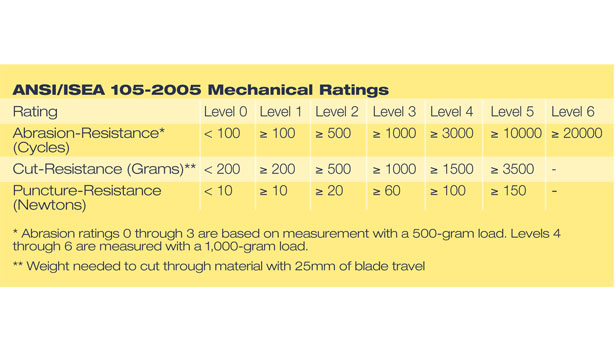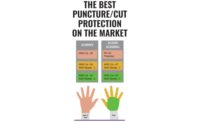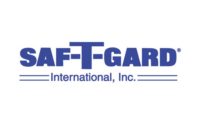Gloves that make the cut: What influences cut resistance

The performance characteristics of a glove may also be affected by the material’s weight and the coatings applied to the outside surface. Lightweight styles are typically more flexible, resulting in less hand fatigue, while their heavier counterparts will generally provide the wearer with more cut and abrasion protection. Coated gloves enhance grip, especially on slippery surfaces. However, some coated gloves may not be appropriate for food handling applications.
Here are some, not all, cut-resistant fibers and materials in terms of characteristics, applications and selection:
- Spectra Fiber: Ultrahigh molecular-weight polyethylene fiber that offers high cut-resistance, even when wet. It’s 10 times stronger than steel per unit weight.
- Spectra gloves are cut and abrasion resistant, often lightweight, flexible and used for food processing, appliance assembly, food service, automotive assembly and the paper industry.
- Dyneema: A super-strong polyethylene fiber that offers maximum strength and minimum weight. It is up to 15 times stronger than quality steel and up to 40% stronger than aramid fibers, both on a weight-for-weight basis. Dyneema floats on water and is extremely durable and resistant to moisture, ultraviolet light and chemicals.
- Kevlar® Aramid Fiber: Five times stronger than steel per unit weight. Inherently flame resistant, it begins to char at 800°F (427°C). The thread made of Kevlar® fiber is used to sew seams on temperature-resistant gloves.
- Kevlar® gloves offer cut- and heat-resistance. Typically a lightweight flexible material, it is used for many applications relating to automotive assembly, sheet metal handling and glass handling.
- Fiber-Metal Blends: Many durable, abrasion-resistant gloves are made of a woven fabric blend of Spectra, Kevlar and stainless steel.
- Metal Mesh: Interlocked stainless steel mesh offers superior cut and puncture protection due to its strength. Metal mesh gloves are very cut- and abrasion-resistant and are used often in meat or poultry applications.
- SuperFabric: Combinations of the number of layers, thickness, substrates, surface coatings, etc., lead to fabrics which have varying levels of puncture, cut and abrasion resistance, grip and flexibility. The tactile surface offers improved grip of wet and oily surfaces.
- Steel Core: Cut- and abrasion-resistant and are often used in the paper industry, as well as for meat or poultry processing, glass handling, metal fabrication, automotive manufacturing.
There are many different glove materials in the market that have a variety of performance characteristics and are used for many different applications.
Although the above materials are known to provide excellent cut-resistance, they are not all-inclusive of glove materials that will provide of cut-resistance.
Manufacturers typically use the ASTM F-1790 standard for measuring the cut protection performance of protective apparel. This test method uses force-distance testers to determine how resistant a material is when exposed to a cutting edge under specific loads. This method provides data to differentiate the cut-resistance of common materials such as cotton, leather and high-performance fibers. Results are provided in terms of grams of weight applied to the specific material tested.
Another testing agency which rates fabric and cut-resistance is ANSI/ISEA (American National Standards Institute)/(International Safety Equipment Association). This standard is similar to the European standard. (See chart above.)
EN 388 Mechanical Ratings
The European standard EN388 (which does not apply or affect other regions but is provided for reference) is slightly different, offering a matrix-based rating system:
First Rating: Abrasion resistance ranges from 0–4 and is based on the number of cycles required to abrade through a sample glove using a specially designed machine for measuring the abrasion of textiles.
Second Rating: Cut resistance ranges from 0–5 and is based on the cut resistance of a rotating circular blade with mass applied to it.
Third Rating: Tear resistance ranges from 0–4 and is the force in Newtons needed to tear a previously cut specimen.
Fourth Rating: Puncture resistance ranges from 0–5 and is the force in Newtons needed to puncture the PPE material using a specially designed stylus.
For example, as shown in the table above, a glove rated 2/3/2/1 would exceed 500 abrasion cycles, 5.0 cut-resistance cycles, 25 Newtons tear resistance, and 20 Newtons puncture resistance.
According to statistics on AnsellPro.com:
- The average indemnity compensation for an OSHA recordable of hand or finger injuries is approximately $3,800
- The average medical payment for a hand or finger injury is approximately $2,600
- There are approximately 439,000 disabling hand and finger injuries every year which equates to a cumulative cost into the millions each year
Although there are no OSHA regulations specific to cut-resistant gloves, OSHA 1910.138(a) and 1910.138 (b) do pertain to hand protection:
“Selection from OSHA 1910.138(a): Employers shall base the selection of the appropriate hand protection on an evaluation of the performance characteristics of the hand protection relative to the task(s) to be performed, conditions present, duration of use, and the hazards and potential hazards identified.”
Sources
Quick Tips #192: Hazard Assessment Form
Standards and Trends in the Glove Industry, By Donald F. Groce, September 2003
Reprinted in part with permission from Grainger, Quick Tips #301. Find more information you can use to help make informed decisions about regulatory issues you face in your workplace. View all Quick Tips Technical Resources at www.grainger.com/quicktips.
Looking for a reprint of this article?
From high-res PDFs to custom plaques, order your copy today!






